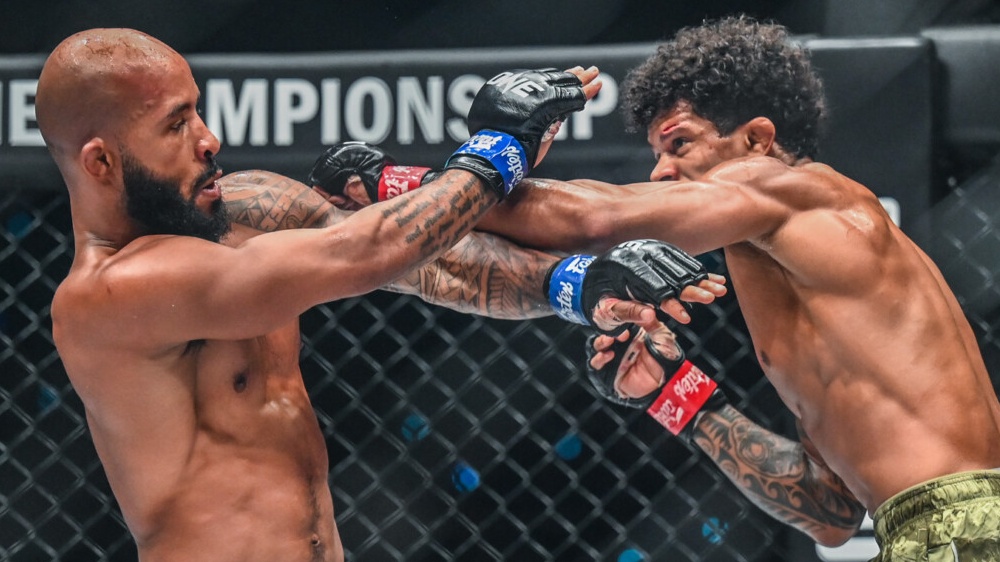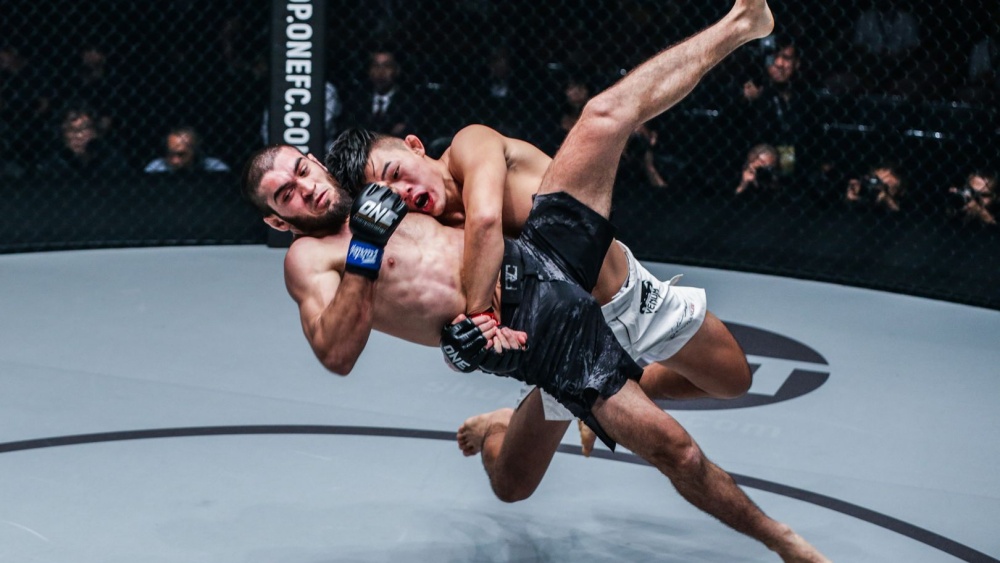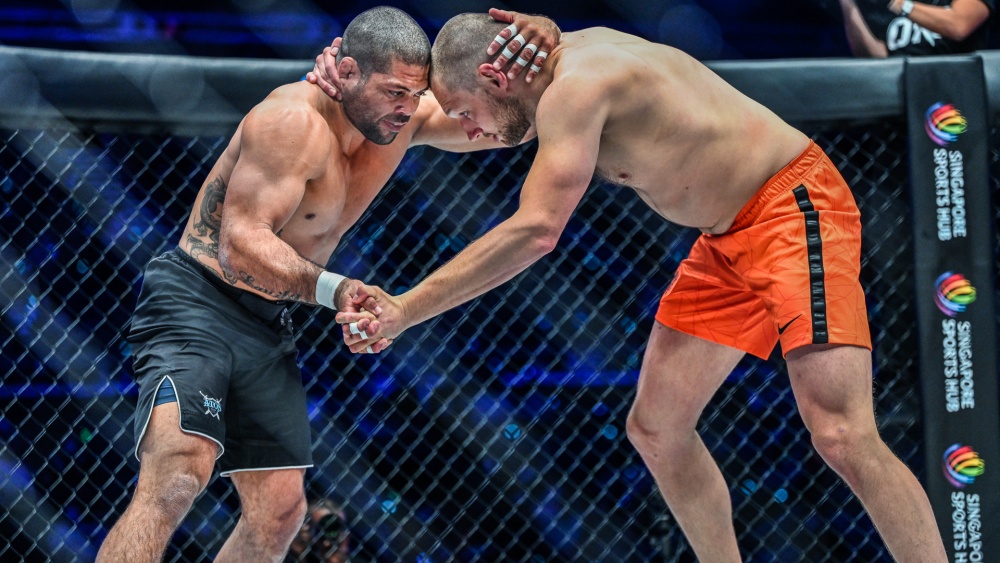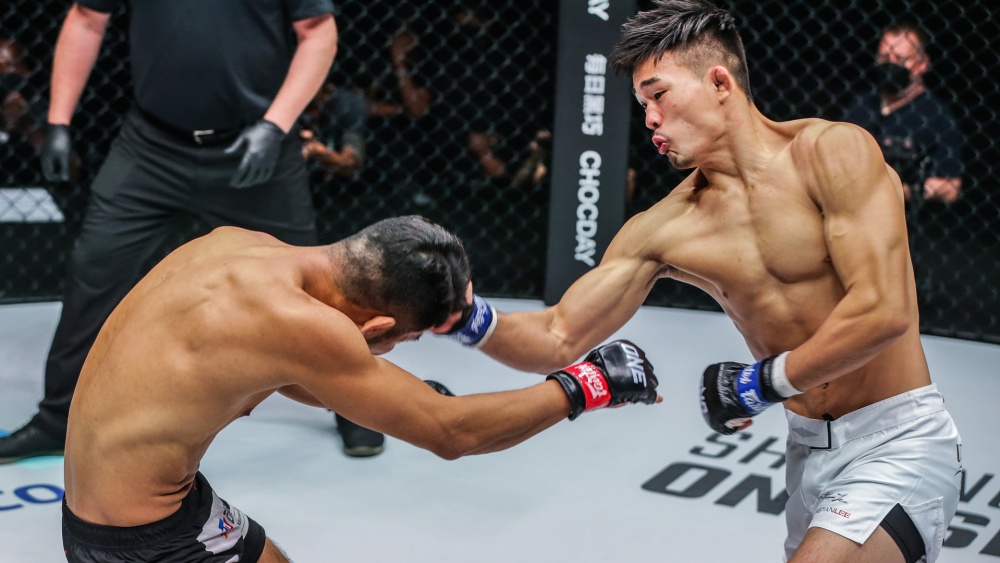Mixed Martial Arts has exploded into mainstream popularity in recent years. It lets martial artists of various styles pit their styles against each other, using a multitude of techniques from a myriad of fighting styles. In addition, MMA is also a reliable form of self-defense, regardless of age or gender. Although there is a focus on spectacular knockouts, defending yourself is an often overlooked benefit of training MMA, whether for the octagon or self-defense. Today, Evolve is pleased to share five ways to improve MMA defense.
Variety Of Guards
1) High Guard
https://www.youtube.com/watch?v=bPIJjEkfUwM
Varying your guard is a powerful way to improve your defense for MMA, as well as being easy to implement. The first guard to use is the traditional high guard, found in all combat sports. In Boxing, Kickboxing, and Muay Thai, you can raise your gloves to the area between your cheek and eyebrows and use your gloves as a shield to block most shots to the head; however, four-ounce MMA gloves are much smaller, making it necessary to raise your high guard to the area between your eyebrows and forehead. A fighter that displays an especially educated high guard is Petr “No Mercy” Yan.
2) Cross Guard
The next guard you can utilize is the cross guard. Although this guard is more commonly used by old-school boxers, it has many advantages for the octagon and self-defense. The cross guard has your lead arm draped across your body, much like the Philly shell, and your rear arm across your head with your rear hand on your lead shoulder. This places your rear elbow directly in front of your face, allowing you to block powerful hooks or straight punches to both your body and head. It can also damage an opponent’s hands if they strike your elbow while attempting to land a punch to your chin. Yoel Romero is one MMA fighter who frequently used the cross-guard with much success. Boxers that have used the cross guard include Ken Norton, Archie Moore, Gene Fullmer, and George Foreman.
3) Long Guard
Another useful guard is the long guard, commonly found in Muay Thai. This guard keeps your lead hand extended as a measuring stick to block the lanes of attack from an opponent. Your rear hand can be in numerous positions, from a high guard to being draped across your chin or forehead like a cross guard.
One fight that showcases this is Sean O Malley vs Peter Yan. Both fighters use the long guard to measure their reach and set up attacks. Sean O’Malley also used the long guard to set up his knockout and become the UFC bantamweight champion in his recent fight against Aljamain Sterling.
4) Philly Shell
The last type of guard we will be discussing is the Philly shell for MMA. Made famous by Floyd “Money” Mayweather in boxing, the Philly shell can be advantageous to use in an MMA context when used sparingly. The Philly shell has your lead arm draped across your body to guard your midsection, while your rear arm is up in a high guard position. In an MMA context, the lowered lead arm can give you a powerful tool to defend takedowns and win the grappling exchange. If an opponent shoots for a takedown or attempts to clinch, the lead arm of the Philly shell stance can be used to capture an underhook, which is crucial for controlling and preventing a takedown. Coach Ramsey Dewey demonstrates in the video above.
Although varying your guard is important, many fighters and coaches consider footwork your first and most important line of defense. Footwork determines which fighter leads the dance and what range the fight takes place. To begin, you should feel comfortable moving in all directions without crossing your feet. Practice both stepping and pushing movements. For example, to move forward, you can either step with your lead foot, then move your rear foot forward into your stance, or push off of your rear foot and explode forward. Regardless of which type of movement you prefer, be sure to return to your stance after each step to be defensively sound.
Although once considered technically incorrect, switching stances is an advanced footwork skill that many high-level fighters have proficiency in. There are many different ways to switch, but the most basic is simply to step forward or backward into the opposite stance. Doing so can create new angles, enter or exit an exchange, and even set up a knockout strike. To avoid being hit or taken down while switching stance, it is advised to extend a long guard with the lead arm of the new stance that you are switching into. For example, if you are switching from orthodox to southpaw, extending your right arm while stepping your right leg forward into southpaw can prevent your opponent from capitalizing on the split second that you are out of stance. Combine this with basic straight punches and footwork and you will have a very elusive style. Coach Barry Robinson explains in the first video above.
One drill to help develop mobility and fluid footwork while moving around the ring is what Barry Robinson calls the da da da drill. It involves you doing a lateral gallop, in your stance, followed by a small pivot, less than a quarter turn. This footwork pattern lets you circle an opponent from the outside of their striking range, keeping you safe.
Another drill to work on lateral movement and defensive responsibility is called the Locche Drill. It starts with a fighter stepping laterally towards their lead side, then performing a down block after stepping laterally again. This is to emulate stopping an opponent’s single-leg takedown attempt. You then step backwards and throw a cross followed by a lead hook. Repeat this drill circling around an object in the center of the octagon to develop fluidity in your movement, as well as practicing takedown defense.
Feinting is another advanced concept that can be used offensively and defensively. In essence, you are faking someone out by making a motion that convinces them a certain strike is being thrown. There are many feints but the two most common in MMA are the jab feint and the rear hip feint. The jab feint is a quick, twitchy movement that mimics the beginning of a jab. Using this can give you a read on your opponent’s reaction; knowing if they parry, block, or move their head will let you pick your follow-up strike to catch them off guard. For example, if your opponent reacts to your jab feint by parrying, you can feint the jab, then throw a lead hook to catch them when their guard is down. The rear hip feint is used to mimic the beginning of a rear low kick. This can be used to draw out a check and kick the standing leg, or to explode into a long range jab cross combination. Israel Adesanya, the UFC middleweight champion demonstrates this in the video above.
Head movement provides an extra layer of defense to avoid knockout blows, while also setting up counter strikes. Basic head movements include ducking, slipping, and rolling to avoid punches and even kicks. A good rule of thumb for head movement is to either move your head after a combination or while throwing a hard punch or kick. Jeff Chan demonstrates some examples in the video above.
Improved Striking
Improving your striking skill doesn’t just increase your offensive capabilities, it also keeps you safer defensively. Being able to land a hard shot can discourage an opponent or attacker from closing the gap to infight with you. Having the skill and footwork to dart in and out landing strikes, while not being hit drains your opponent and keeps you safe. Although your striking style will depend on your personal preference and body type, it is important to know how to fight from the outside and inside. Fighting from the outside lets you pick at your opponent while you stay safe or find the chance to escape, in a self-defense situation. Infighting lets you stay safe in encounters that you cannot escape and either knock out your opponent or get them to disengage. Improving your striking comes from a combination of practicing your technique in shadowboxing and improving your physical conditioning.
Try these methods and drills to improve your MMA defense. Although knocking your opponent out is the goal for many fighters, being defensively sound is a much more important skill for both the octagon and any situation where you may have to defend yourself.
You may also like:

















